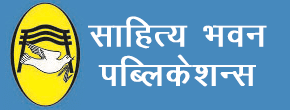The study of Public Administration is a part of the larger study of governmental processes and political systems. Public Administration is the means by which policies and objectives of the Constitution are implemented. To understand how government is administered, public administration must be studied in the context of our governmental
system.
To understand how the administration of government develops, the student must be aware of the great changes that have taken place in our society during the last half century. These changes have enormously increased—in volumes and in kind—the functions placed upon government, and have required the development of a new public administration that was understand of at the dawn of the present century. The revolution in science and technology, rapid urbanisation, population explosions, the problem of environment degradation and innovations of the new management techniques have
greatly altered the tasks and responsibilities of government and of those who administer our governmental agencies.
Formerly the primary objective of the study of Public Administration was to make government more efficient and economical. This goal is still important. But today increased emphasis is placed on the role of public administrators in the formulation of
policies and programs to cope with the pressing problems and needs of a rapidly evolving developing society. No longer is it believed that administration can be kept separate from policy and politics. Public Administration works with and under the direction of politicians, who have an indispensable role in democratic government. How to achieve democratic control over bureaucracy—government officials—so that it faithfully and effectively carries out the policies of the elected representatives and political masters is one of the leading problems of democratic governments everywhere.
Indian public administration during colonial rule was shaped by the character and requirements of the regime. After Independence, the context of administration changed radically as government, in a situation of resource constraint, had to work toward planned socio-economic development in as short a time as possible. ‘Development’ took the centre-stage in Indian administration immediately after the start of independent political life.
Since 1991, the context of administration has again been changing under the impact of the New Economic Policy. Concepts like globalisation, liberalisation and privatisation have gained wide currency that are indicative of more openness of government to international competition, deregulation, and dismantling of a series of government controls and downsizing of government by handling over selected activities to the private sector and by encouraging the non-government organisations to work more and more in the social development sector, particularly in such fields as health, education, women’s
development, etc.
In the years to come, public administration in India is likely to face an unprecedented situation. It will need to operate under the long shadow of a growing political crisis, of incessant instability, of an endemic growth of corruption and of growing loss of faith in major parties among large sections of the population. It is likely to face a growing decline in the overall role of the State in the governance of the country, particularly in its political dimensions, thus necessarily emphasising a growing role for the administration and the bureaucracy.
The present volume presents a fairly comprehensive view of the evolving Indian Administrative system at a critical period of its development. The volume seeks to analyse and probe the diverse aspects and problems of contemporary Indian Administration in their proper historical setting. The book has been written primarily for students of Indian Universities. The book is a recommended reading for candidates appearing in the Civil Services Examinations.
EVOLUTION OF INDIAN ADMINISTRATION
1. ADMINISTRATIVE SYSTEM DURING THE PERIOD OF KAUTILYA
2. THE MUGHAL ADMINISTRATIVE SYSTEM
3. ADMINISTRATIVE SYSTEM DURING THE BRITISH PERIOD : Legacy of British Rule
4. SALIENT FEATURES OF THE INDIAN ADMINISTRATION
PHILOSOPHICAL & CONSTITUTIONAL FRAMEWORK OF GOVERNMENT
5. SALIENT FEATURES OF THE INDIAN CONSTITUTION
6. THE PREAMBLE : Philosophy of the Constitution
7. THE FUNDAMENTAL RIGHTS : Charter of Political & Civil Liberties
8. DIRECTIVE PRINCIPLES OF STATE POLICY : Manifesto of Aims and Objectives
9. FUNDAMENTAL RIGHTS AND DIRECTIVE PRINCIPLES OF STATE POLICY : Relationship
10. FUNDAMENTAL DUTIES
11. PARLIAMENTARY DEMOCRACY IN INDIA
12. INDIA’S ADMINISTRATIVE CULTURE
13. BUREAUCRACY AND DEVELOPMENT
PUBLIC SECTOR UNDERTAKING
14. PUBLIC UNDERTAKINGS IN INDIA
UNION GOVERNMENT AND ADMINISTRATION
15. OFFICE OF THE PRESIDENT : Method of Election
16. POWERS AND POSITION OF THE PRESIDENT
17. THE PRIME MINISTER : Office and Powers
18. UNION COUNCIL OF MINISTERS
19. THE INDIAN PARLIAMENT : Role and Functioning
20. THE SUPREME COURT OF INDIA : Organisation and Powers
21. JUDICIARY AND DEMOCRATIC PROCESS : Context of Judicial Review in India
22. JUDICIARY AND DEMOCRATIC PROCESS : Context of Judicial Activism in India
23. CABINET COMMITTEES
24. CABINET SECRETARIAT
25. PRIME MINISTER’S OFFICE
26. CENTRAL SECRETARIAT
27. MINISTRIES AND DEPARTMENTS
28. BOARDS AND COMMISSIONS IN INDIA
29. NATIONAL INSTITUTE FOR TRANSFORMING INDIA—NITI AAYOG
FEDERAL SYSTEM AND CENTRE-STATE RELATIONS
30. INDIAN FEDERAL SYSTEM : Structure and Processes
31. CENTRE-STATE LEGISLATIVE RELATIONS : An Overview
32. CENTRE-STATE ADMINISTRATIVE RELATIONS : An Overview
33. CENTRE-STATE FINANCIAL RELATIONS : An Overview
34. POLITICS OF PRESIDENT’S RULE IN THE STATES
35. OVER-CENTRALISATION : A Plea for State Autonomy
36. CENTRE-STATE RELATIONS : Areas of Conflict
37. COMMISSIONS ON CENTRE-STATE RELATIONS : Major Recommendations
38. ROLE OF THE FINANCE COMMISSION
STATE GOVERNMENT AND ADMINISTRATION
39. OFFICE OF THE GOVERNOR : Mode of Selection and Removal
40. ROLE OF THE GOVERNOR : Powers and Position
41. CHIEF MINISTER AND THE COUNCIL OF MINISTERS
42. CHIEF SECRETARY
43. STATE SECRETARIAT
44. DIRECTORATES
DISTRICT ADMINISTRATION AND LOCAL GOVERNMENT
45. DISTRICT ADMINISTRATION : Changing Role of the District Collector
46. PANCHAYATI RAJ INSTITUTIONS
47. URBAN LOCAL GOVERNMENT
48. RURAL DEVELOPMENT PROGRAMMES IN INDIA
49. URBAN DEVELOPMENT PROGRAMMES IN INDIA
PUBLIC SERVICES
50. EVOLUTION OF THE CIVIL SERVICES IN INDIA
51. CIVIL SERVICES IN INDIA : Position Classification
52. ALL INDIA SERVICES : Nature, Role and Rationale
53. ALL INDIA SERVICES : IAS, IPS & IFS
54. CENTRAL CIVIL SERVICES
55. TRAINING AND CAPACITY BUILDING IN THE CHANGING CONTEXT OF GOVERNANCE
56. POLITICISATION OF THE HIGHER CIVIL SERVICES—RELATIONS BETWEEN POLITICAL AND PERMANENT EXECUTIVES : Issues of Anonymity & Neutrality vs. Commitment
57. GOOD GOVERNANCE : Initiatives in India
FINANCIAL MANAGEMENT
58. BUDGET AS A POLITICAL INSTRUMENT
59. BUDGETARY PROCESS IN INDIA : Role of the Ministry of Finance
60. CONTROL OVER PUBLIC EXPENDITURE : Estimates Committee and Public Accounts Committee
61. ACCOUNTS AND AUDIT : Role of Controller General of Accounts
62. THE COMPTROLLER AND AUDITOR GENERAL OF INDIA
ADMINISTRATIVE REFORMS
63. ADMINISTRATIVE REFORMS : Insights from Indian Experience
64. REFORMING INDIA’S HIGHER CIVIL SERVICES : Agenda for 21st Century Reforms
MACHINERY FOR PLANNING
65. ECONOMIC PLANNING, FEDERALISM AND MACHINERY FOR PLAN FORMULATION
66. DECENTRALISED AND DISTRICT PLANNING IN INDIA
ADMINISTRATION OF LAW AND ORDER
67. ROLE OF CENTRAL AND STATE AGENCIES IN MAINTENANCE OF LAW AND ORDER
68. CRIMINALISATION OF POLITICS AND ADMINISTRATION
69. POLICE REFORMS IN INDIA : Historical Perspective
70. NATIONAL POLICE COMMISSION
71. REFORMS IN POLICE
MAJOR ISSUES IN INDIAN ADMINISTRATION
72. MINISTER-CIVIL SERVANT RELATIONSHIP
73. ETHICS AND VALUES IN PUBLIC SERVICE : Problem of Corruption in Indian Administration
74. THE LOKPAL AND LOKAYUKTAS
75. COALITION GOVERNMENTS AND POLITICS : Problems of Administration
76. HUMAN RIGHTS : National Human Rights Commission
77. DISASTER MANAGEMENT







![इतिहास (History) [for Vinoba Bhave University, Hazaribagh]](https://i0.wp.com/sahityabhawanpublications.com/wp-content/uploads/2017/10/2850-History_final.jpg?resize=245%2C300&ssl=1)





Reviews
There are no reviews yet.